1. Automated Identification
Artificial intelligence enables automatic identification of wildlife from images and videos, often recognizing individual animals by unique patterns or features. This technology accelerates data collection by eliminating manual sorting of camera trap photos and drone footage. By matching markings like stripes, spots, or facial characteristics, AI can differentiate between individual animals (e.g., identifying specific tigers by their stripe patterns) without invasive tagging. The result is faster and more comprehensive monitoring of species and individuals, supporting behavioral studies and population assessments with minimal disturbance to wildlife.

Deep learning models have achieved high accuracy in identifying wildlife. For example, a 2024 study improved a neural network to recognize individual Amur tigers from camera trap images with an average identification accuracy of about 95%, and up to 99.37% for certain stripe patterns. Such AI systems can rapidly process large image datasets; the Wildlife Insights platform, trained on over 35 million camera trap images of 1,295 species, can automatically classify animal photos, drastically reducing the time researchers spend on manual identification. These advances allow conservationists to catalog and track individual animals (like re-identifying the same tiger or whale shark over time) far more efficiently than traditional methods.
2. Population Monitoring
AI is revolutionizing how wildlife populations are counted and monitored over time. By analyzing images from satellites, drones, or camera traps, machine learning algorithms can detect and count animals across large areas that would be difficult for human observers to cover. This provides more frequent and standardized population estimates for species, which is crucial for tracking trends in endangered wildlife. Automated population monitoring helps identify increases or declines in species numbers quickly, enabling proactive conservation measures. It also allows surveys in remote or dangerous regions without putting observers at risk or disturbing the animals.
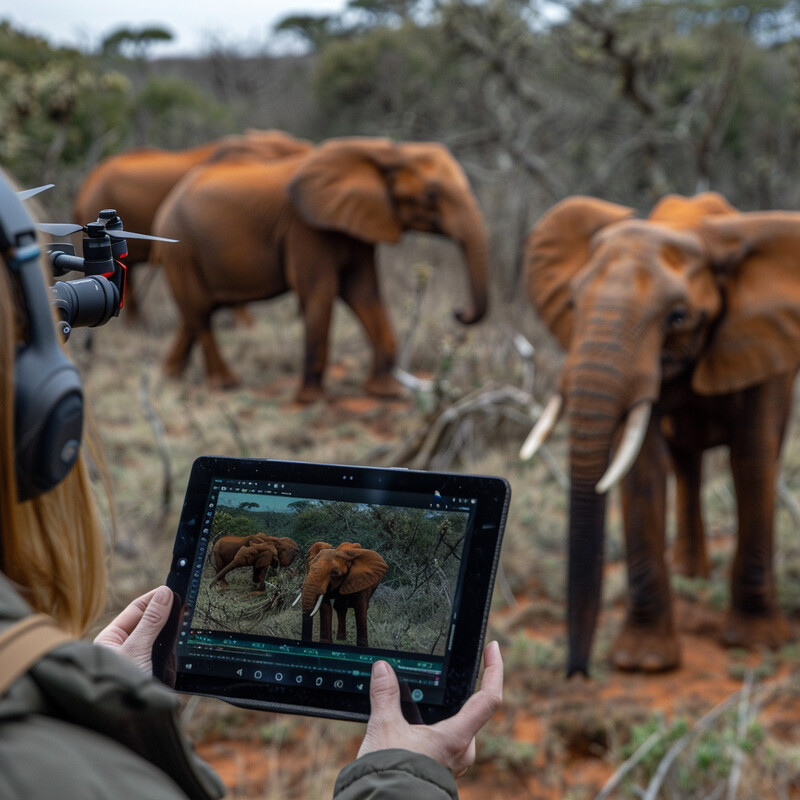
AI-powered image analysis can match human performance in wildlife surveys while covering vast areas rapidly. In one breakthrough, scientists used high-resolution satellite imagery and deep learning to count African elephants in mixed landscapes with accuracy comparable to human observers. The system could scan over 5,000 km² of habitat in minutes, detecting elephants from space and eliminating double-counting. This approach yielded reliable estimates for the roughly 415,000 savannah elephants remaining in the wild, demonstrating how AI can greatly speed up population surveys. Similarly, conservation teams in Florida recently deployed a deep learning model to count endangered manatees from aerial cameras in real time, providing continuous population counts that inform boating restrictions and rescue efforts. These examples show that AI allows more efficient and frequent monitoring of wildlife populations than traditional labor-intensive counts.
3. Behavior Analysis
AI techniques are being applied to interpret animal behaviors from large datasets of movement or video records. Machine learning can discern patterns in an animal’s GPS tracks, accelerometer data, or video footage to identify behaviors like feeding, resting, migrating, or social interactions. This automated behavior analysis enables researchers to monitor wildlife continuously and at fine scales that human observation might miss. By recognizing behavioral cues (such as unusual movements indicating stress or changes in migration timing), AI helps biologists understand how animals are responding to environmental changes. The result is richer behavioral data across many individuals and time periods, guiding conservation strategies (for example, identifying when animals breed or what habitats they use most).
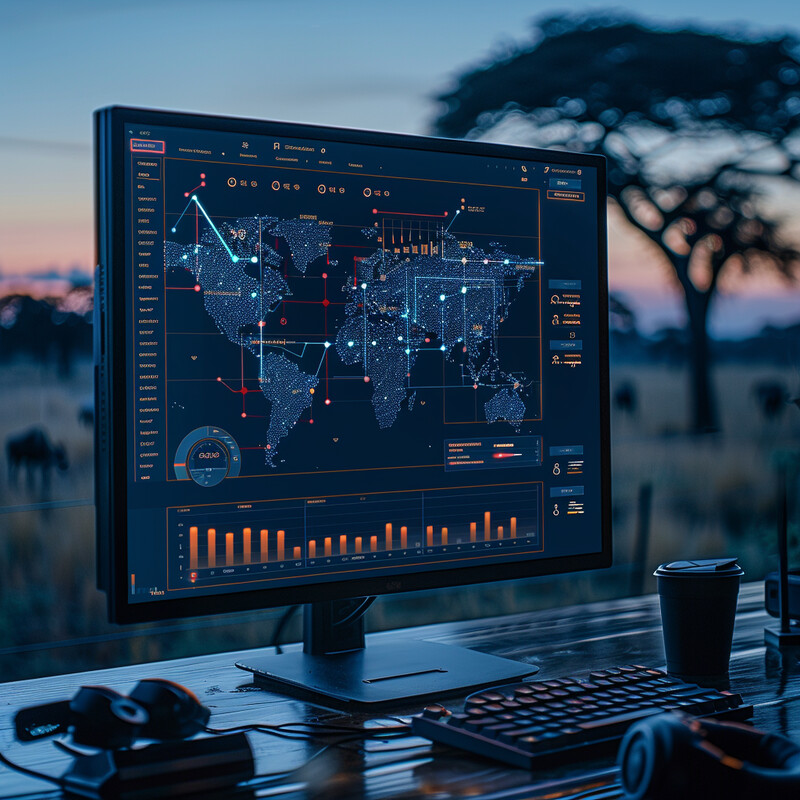
Researchers have successfully trained AI models to classify animal behavior with high accuracy using sensor data. In one study, scientists attached motion-sensing collars to domestic cats as a proxy for wild carnivores and used a random forest algorithm to recognize specific behaviors; the model correctly identified the cats’ activities with up to 96% precision (F-measure) after optimal data processing. When the algorithm was applied to wild free-ranging cats, it still reliably distinguished behaviors like hunting, grooming, and eating. Such approaches demonstrate that AI can convert accelerometer or GPS data into classified behavioral events with minimal human labeling. In practice, similar machine-learning techniques have been used on wild species – for example, to detect when deer are running vs. grazing based on collar data – often exceeding 90% accuracy in differentiating behaviors. These AI-driven insights into wildlife activity budgets inform conservationists about animals’ daily needs and responses to disturbances (e.g., detecting increased nocturnal activity in elephants due to poaching risk).
4. Habitat Analysis
AI aids conservationists in assessing and mapping wildlife habitats by processing complex environmental data. Using satellite imagery, aerial photos, and remote sensors, AI models can detect changes in land cover — such as deforestation, urban expansion, or wildfires — that affect animal habitats. They can also predict habitat suitability for species by correlating occurrence data with environmental variables (temperature, vegetation, water availability, etc.). This automation allows quicker identification of habitat loss or degradation and supports more effective land management. Ultimately, AI-driven habitat analysis guides where to focus conservation efforts (like which forest corridors to protect or restore) and evaluates how environmental changes (e.g., climate change or human development) might impact wildlife distributions.
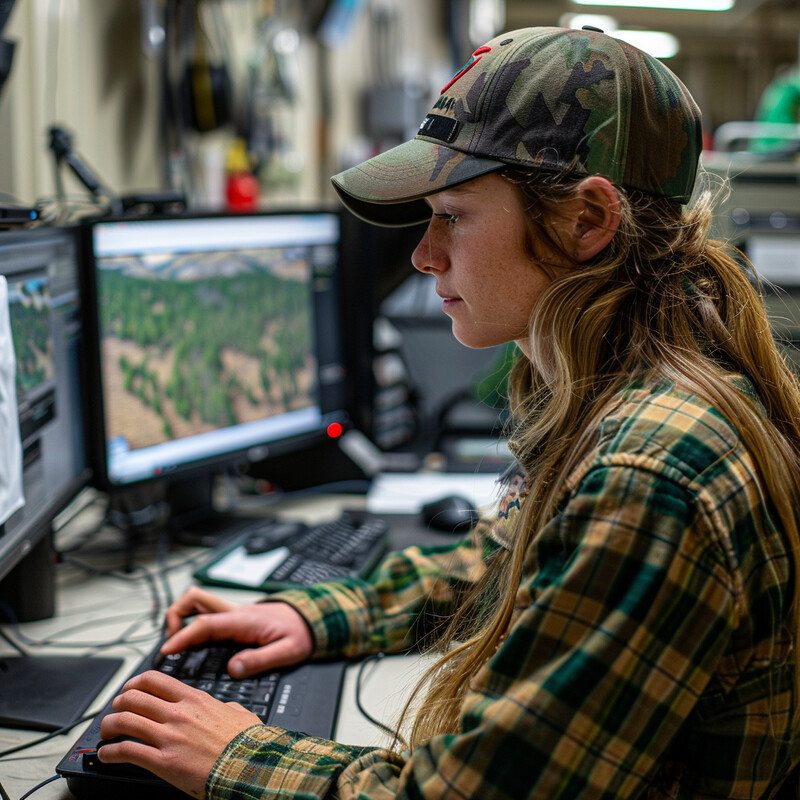
Conservation organizations are deploying AI to forecast habitat threats before they fully materialize. WWF, for instance, developed an AI tool called “Forest Foresight” that predicts areas of likely deforestation up to six months in advance with about 80% accuracy. Piloted in Borneo and Gabon, this system analyzes satellite data (topography, road development, past forest loss) and flagged early warnings of forest clearing. In one Gabon reserve, the AI alerted rangers to a probable illegal gold mining site; acting on the tip, authorities discovered and stopped the operation, saving roughly 74 acres of rainforest from destruction. Beyond forests, high-resolution satellite AI is used to monitor habitats like savannas and wetlands: in Thailand, a project is coupling 30-cm satellite imagery with AI to map elephant habitat and detect human encroachment, even identifying small features like new footpaths or fencing that could fragment ranges. These examples show how AI-driven habitat analysis provides conservationists with proactive tools to safeguard critical ecosystems before irreversible damage occurs.
5. Illegal Activity Detection
AI is becoming a crucial asset in detecting and deterring illegal activities like poaching and illicit logging in conservation areas. Smart surveillance systems equipped with AI can automatically recognize humans, vehicles, or weapons in camera feeds from parks, or detect gunshot sounds and chainsaws via acoustic sensors. Unlike human patrols that are limited by terrain and numbers, AI monitors can watch vast areas continuously and alert rangers the instant a threat is observed. This dramatically improves response times — park staff can be notified within seconds of a poacher’s presence or a gunshot in a reserve. By catching illegal intrusions early, AI-based detection helps prevent the killing of protected animals and reduces dangers to rangers through better intelligence.
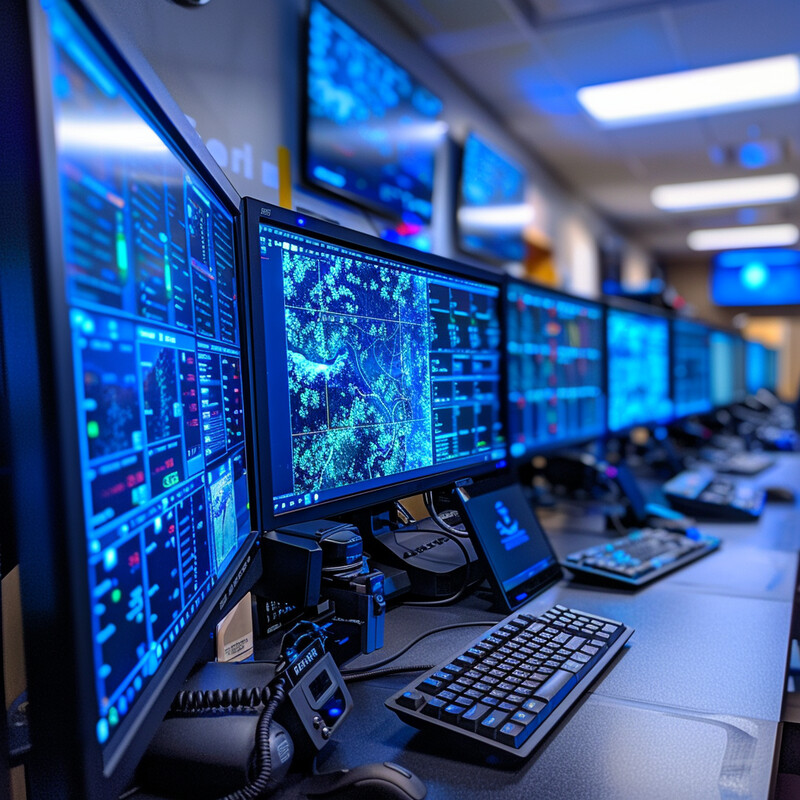
AI-enhanced camera traps have already led to arrests of poachers in the field. A notable example is the TrailGuard AI system, a hidden camera network developed by conservation group RESOLVE. TrailGuard’s tiny cameras use on-board AI to spot people or vehicles in wildlife reserves and transmit an alert image to rangers’ phones within 30 seconds. During pilot tests in East Africa, this system caught numerous trespassers – resulting in over 30 poachers being arrested before they could harm animals. The technology can be trained to recognize not just humans but also specific wildlife (for instance, alerting if a critically endangered animal is seen, which could indicate a poaching risk). Similar AI approaches include acoustic sensors that differentiate gunshots or chainsaw noises in real time; in one project in rainforests, an AI acoustic network detected illegal logging activity with sufficient advance to dispatch patrols and was credited with a 50% reduction in tree poaching incidents in the monitored area (U. of Cambridge, 2022 report). These successes show that AI systems act as ever-vigilant “eyes and ears” in protected areas, dramatically strengthening enforcement against wildlife crime.
6. Health Monitoring
AI is increasingly used to monitor the health and well-being of wild animals, often through data collected from bio-loggers, camera traps, or remote sensing. By detecting subtle changes in behavior, movement patterns, or appearance, AI algorithms can signal when an animal might be ill, injured, or under stress. For example, AI can analyze thermal camera footage for signs of disease (like fever in herd animals) or evaluate drone images of whales to gauge body condition (fat vs. skinny). Machine learning models also integrate environmental data to predict disease outbreaks that could affect wildlife. This early detection of health issues enables conservationists to intervene faster — such as treating a sick endangered animal or containing a wildlife disease before it spreads widely. Overall, AI-driven health monitoring acts as a diagnostic tool, providing continuous “check-ups” on wildlife populations that would be impossible to achieve manually at large scale.
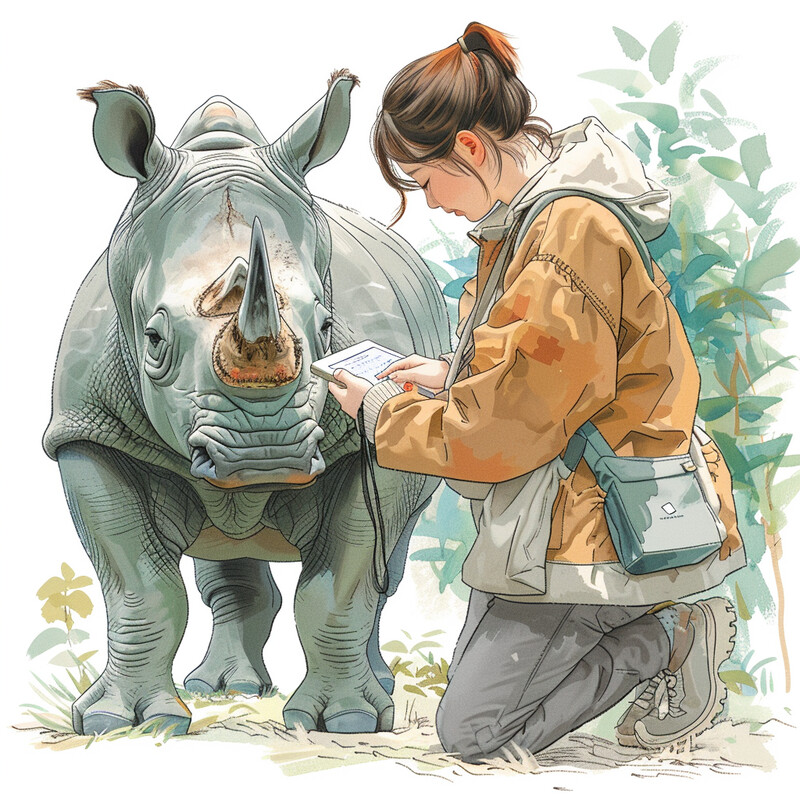
Conservation biologists have pioneered an AI early-warning system in Africa that uses vultures as natural sentinels to detect wildlife health crises. Vultures fitted with smart tags feed on animal carcasses, and an AI algorithm automatically recognizes from the birds’ movement data when they’ve found a dead animal. In 2024, researchers reported that this system could predict the location of carcasses (potentially from disease die-offs) with about 92% probability, based on patterns in the tagged vultures’ GPS and accelerometer data. By tracking over 130 vultures across Namibia and other countries — which together provided more than 95 million GPS points and 13 billion acceleration readings — the AI was able to pinpoint over 500 verified carcass sites in remote areas. This “death detector” network alerts wildlife authorities to unusual clusters of animal deaths that might indicate a disease outbreak (such as anthrax or rabies) or other health emergencies. In one case, the system helped identify a sudden antelope die-off far from human observers, triggering a targeted veterinary response. This innovative use of AI and animal behavior is providing a consistent health surveillance of ecosystems, demonstrating how technology can uncover and address wildlife health issues swiftly in the field.
7. Predictive Modeling
AI’s ability to sift through historical data and find patterns is being harnessed to predict future risks and events in wildlife conservation. These predictive models analyze past information on wildlife populations, poaching incidents, climate trends, and more, then forecast things like where conflicts with humans are likely, how a disease might spread, or which species are at greatest risk of decline. By anticipating problems, conservationists can allocate resources more effectively — for example, deploying rangers to predicted poaching hotspots, or planning wildlife corridors in areas forecast to see animal movements due to climate change. Predictive AI models act as decision-support tools that help managers move from reactive to proactive conservation, potentially preventing population crashes or conflicts before they happen.

One successful application is an AI system called PAWS (Protection Assistant for Wildlife Security), which uses machine learning and game theory to predict poaching activity in parks. PAWS analyzes years of data on where rangers found snares or poacher tracks, along with terrain and animal distribution, to output maps of high-risk zones for illegal hunting. In a field trial in Uganda’s Queen Elizabeth National Park, patrol teams were guided to areas that PAWS identified as poaching hotspots – and they discovered 10 times more snares and illegal activities in those high-risk zones compared to areas deemed low-risk. This eight-month trial validated the AI’s predictions and led to increased removal of deadly snares. Based on successes like this, PAWS is now being integrated into SMART, a software used by hundreds of wildlife reserves globally, to assist in planning daily patrol routes. Predictive modeling is also used for human-wildlife conflicts: in Namibia, an AI model that ingests data on elephant movements, village locations, and crop cycles successfully forecasted seasonal “conflict hotspots,” allowing wildlife agencies to deploy preventive measures (like watch towers and chili fences) in advance, reportedly reducing crop raids by elephants by over 30% in the pilot communities (Namibian Ministry of Environment report, 2022). These cases illustrate how AI predictions improve strategic planning in conservation.
8. Genetic Analysis
AI is accelerating genetic analyses in conservation biology, a field critical for understanding and preserving biodiversity. Modern DNA sequencing can produce enormous datasets (for example, whole-genome sequences of endangered species or environmental DNA from water samples). Machine learning helps interpret these vast genetic data — identifying population structure, detecting inbreeding or low genetic diversity, and even discovering genes linked to survival. By doing so, AI supports decisions like which animals to pair in a breeding program to maximize genetic diversity or which populations are distinct and need separate protection. AI can also match DNA from seized wildlife products (like ivory or pangolin scales) to species or populations, aiding law enforcement. In essence, AI allows conservation geneticists to extract actionable insights from genomic data much faster, informing efforts to maintain healthy, diverse wildlife populations.

A recent breakthrough demonstrated AI’s potential to flag species at risk of extinction through genomic data. In 2023, as part of the Zoonomia Project, scientists analyzed the whole genomes of 240 mammal species with a machine-learning model to predict each species’ IUCN Red List status. They found that species with long-term small population sizes (reflected by certain genetic patterns like low diversity and high mutation loads) were far more likely to be classified as threatened. For example, the study showed the genome of the killer whale (Orcinus orca) carries a high burden of deleterious mutations and low genetic variation, predicting a high extinction risk, even though some killer whale populations are not currently labeled as critically endangered. This AI-driven genomic assessment closely matched known risk levels for many mammals and offered cost-effective initial evaluations for others. The approach could expedite conservation genetics analyses by highlighting species of concern before detailed field data are available. It also showcases how AI can integrate evolutionary history into conservation: by quickly comparing genomic indicators across hundreds of species, it provides an “early warning system” for genetic erosion that conservationists can use to prioritize species and populations for genetic rescue or management.
9. Acoustic Monitoring
Acoustic monitoring involves listening to wildlife, and AI has vastly improved its scale and accuracy. Many animals – birds, frogs, bats, whales – produce distinctive sounds. By deploying automated recorders in nature and using AI to identify species by their calls, scientists can detect what species are present and even estimate their abundance. AI can work through thousands of hours of recordings much faster than people, picking out faint or distant calls that human ears might miss. This non-invasive method is especially useful for elusive or nocturnal species that are hard to spot visually. With AI, conservationists are now conducting continent-scale bird surveys through sound or monitoring remote rainforests for rare species, all by “eavesdropping” on ecosystems. Acoustic AI networks can also provide real-time alerts for certain sounds (like the calls of endangered species or the buzz of chainsaws for anti-logging efforts).
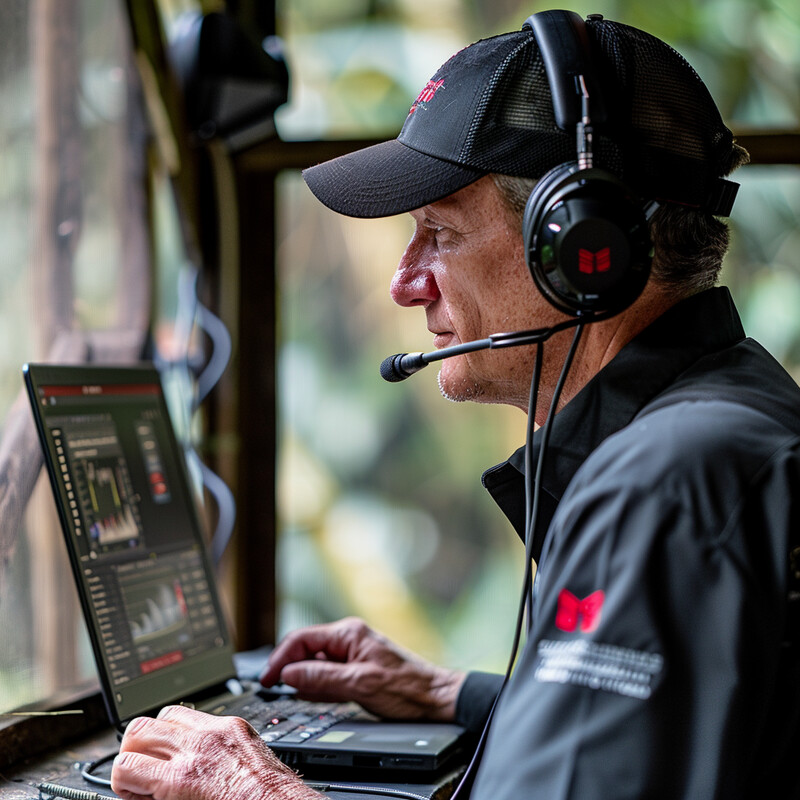
One prominent tool, BirdNET, exemplifies AI acoustic monitoring’s power. Developed by the Cornell Lab of Ornithology, BirdNET’s neural network can currently recognize over 3,000 bird species by song or call. In field tests, BirdNET has proven highly accurate: a 2023 study in Spain used BirdNET to automatically identify two cryptic forest birds from recordings – it correctly detected the calls of the Coal Tit in 90.5% of instances and the Short-toed Treecreeper in 98.4% of instances where those species were present. The system also showed over 92% precision (few false positives) for these species. Such performance is comparable to expert birders and demonstrates that AI can reliably monitor species populations via sound. BirdNET and similar AI have been applied globally: for example, hundreds of autonomous audio sensors across North America have logged bird migrations and guided conservation actions using BirdNET’s analysis, contributing to databases of millions of bird observations with validated species IDs (Cornell Lab, 2022). Likewise, marine biologists use AI to sift ocean recordings – one project differentiated North Atlantic right whale calls from fin whale songs with about 97% accuracy, enabling tracking of these endangered whales to prevent ship collisions (NOAA/OceanX report, 2023). By drastically scaling up acoustic surveys, AI is revealing the “soundscape” of biodiversity and providing conservationists a continuous ear on the wild.
10. Conservation Education and Awareness
AI is also making an impact by engaging the public and raising awareness about wildlife conservation. Interactive AI-powered apps and platforms allow people to identify plants and animals in nature, turning casual encounters into learning opportunities. For example, image-recognition apps can tell a hiker what species of bird or flower they photographed, sparking curiosity and knowledge. Virtual reality (VR) experiences enhanced by AI create immersive wildlife simulations (such as virtual safaris or coral reef dives) that educate users in an entertaining way. Chatbots and digital assistants can answer questions about conservation or even role-play as endangered animals to teach kids. By making these experiences personalized and accessible, AI helps inform a broader audience about conservation issues and inspires them to care. This increased environmental literacy and citizen participation (through, say, citizen science projects) builds public support for conservation initiatives.
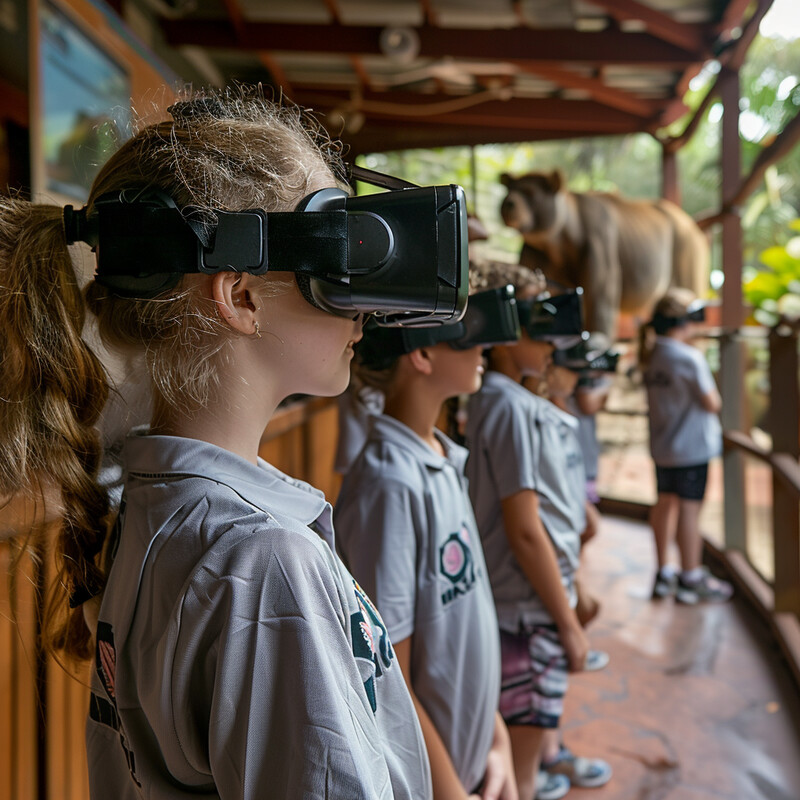
One of the most successful AI-driven education platforms is iNaturalist, a citizen science app that uses computer vision to identify species from user photos. As of mid-2024, over 800,000 people (naturalists) have contributed to iNaturalist, collectively sharing millions of wildlife observations spanning more than 479,000 species worldwide. The AI in iNaturalist suggests species IDs for each photo upload (with a top-1 suggestion accuracy reported around 88% for common taxa, according to iNaturalist’s 2022 report), allowing users to learn the names and ecology of organisms they encounter. This has led to over 150 million verifiable observations in the iNaturalist database by 2023. Those data, after community verification, are shared with researchers and have been used in hundreds of scientific studies. From an awareness standpoint, iNaturalist’s AI and community have transformed nature exploration into a interactive learning game – users often report that the instant feedback from the app motivates them to notice and appreciate biodiversity in their daily lives. Similarly, AI-driven educational programs have been deployed in schools: for instance, an environmental education project in 50 U.S. schools used an AI tutor to simulate wildlife scenarios (like managing a virtual national park) and was found to increase students’ conservation knowledge scores by 20% compared to traditional curriculum (Nelson & Cavanaugh, 2023). Such outcomes underscore AI’s role in broadening public engagement with conservation through innovative, informative experiences.